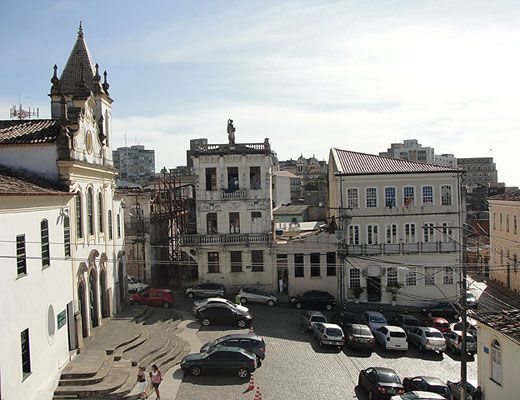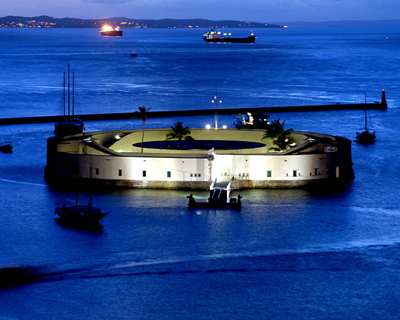 Mouraria Neighborhood: name taken from Romans distracted as Muslims
Mouraria Neighborhood: name taken from Romans distracted as Muslims
One of the most charming and bohemian neighborhoods of Salvador, Brazil’s third largest city and capital of the state of Bahia, is called Mouraria (the Moorish quarter), a small area full of old houses where there is an army headquarter, some university buildings and many bars. The name inherited from traditional Lisbon neighborhood brings actually a mistake. As explains local historian Cid Teixeira actually the little neighborhood of Salvador, that is just a few meters from the Arena Fonte Nova, was initially occupied by Romans, who at that time were seen as Muslims.
But they, the Muslims, were here, brought from Africa as slaves, and in the first half of the nineteenth century almost turned the city , that had been the Brazil’s capital, an independent Islamic republic.
In 1835, Salvador had just over 65,000 inhabitants and 40% of them were slaves (slavery was completely abolished in Brazil in 1888). Adding the mulattoes and free blacks, Afrodescendants reached 78% of the residents. And among the blacks who had achieved freedom through manumission letter provided by their masters, were the “malês”, as they were called Africans who could read and write and who dominated the Arab.
The renowned historian João José Reis, author of “Slave Rebellion in Brazil: The Muslim Uprising of 1835 in Bahia (Taylor & Francis, 1995), explains in his book that most of the slaves sent to city of Salvador in previous years came from the ports of Luanda, Benguela and Cabinda, which currently comprise the territory of Angola. But at the time of the rebellion, 30% of the slaves who lived in Salvador came from the Gulf of Guinea, through the ports of Porto Novo, Lagos and Badagri, the last two of the current Nigeria, (which is coincidentally in the same group of Bosnia-Herzegovina and Iran).
Forte de São Marcelo, where Malês leaders were detained
Arriving at Bahia, these new slaves were called different names, depending on the language thy spoke. The largest of these groups was formed by Nagôs, that although they were supporters of Orisha worship professed the Muslim faith.
Besides the struggle against slavery, common to all blacks and some whites, nagôs maintained resistance to the imposition of the Catholic faith and to the extent that they could buy their freedom began to meet and discuss strategies for liberation. The nagôs planned a revolt that would explode on January 25, 1835. Under the leadership of Muslims Manuel Calafate, Aprígio, Pai Inácio, bought weapons and wrote their plans in Arabic to avoid detection. But they were betrayed by a black woman who reported their plans to the authorities.
Even with bared plans, the Malês went on the attack against the dominant forces in January, 6. A group of between 600 and 1,500 men (the amount varies in historical documents) faced police and National Guard, who were much more numerous. No one knows exactly what the movement’s leaders had in mind, if only iberation of all black people or the proclamation of independence in relation to Brazil, but some historians see evidence that under the Malês, Bahia could have become an Islamic republic.
Dozens of Malês were killed in combat, four leaders were executed and others were detained at Fort Sea (Forte de São Marcelo, one of the attractions of Salvador). And the Revolt of Malian went down in history as the greatest rebellion led by Muslims in the Americas.


